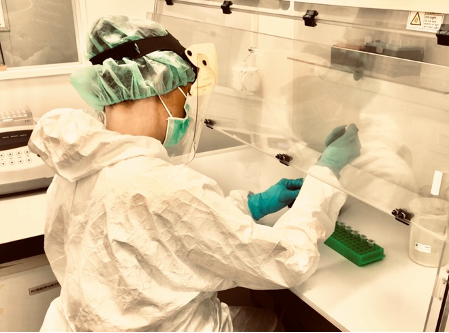A study conducted by an international team of researchers has unveiled captivating insights into the culinary customs of Bronze Age nomadic societies.
Through examination of ancient metal cauldrons unearthed in northern Mongolia, the investigation highlights the functional uses of these vessels in food preparation, notably the harvesting of ruminant blood for sausage production and the preservation of yak milk dating back 2,700 years.
The collaborative effort led by Dr Shevan Wilkin, a Griffith University Visiting Scholar from the University of Basel to the Australian Research Centre for Human Evolution, drew on expertise from a number of scholars at the University of Michigan, Max Planck Institute of Geoanthropology, the National Museum of Mongolia, and the Mongolian Institute of Archaeology to spearhead a comprehensive protein analysis on cauldrons dating to the Final Bronze Age, circa 2,700 years ago.

On the Mongolian steppe, Bronze Age archaeological sites that were not marked by indicative burial mounds could be difficult to spot on the landscape, and in this case, these cauldrons were a surprising discovery.
In 2019, two herdsmen from the Khovsgol province northern Mongolia accidentally unearthed the cauldrons, along with a collection of other artifacts, while working on a fence of their horse corral.
“Fortunately, the herders carefully stored these artifacts and handed them over to the research team of the Institute of Archaeology, Mongolian Academy of Sciences in the spring of 2020,” co-author Dr Bayarsaikhan Jamsranjav said.
These findings divulged the predominant use of these ancient cauldrons in the extraction of blood from ruminant animals. The study provided evidence indicative of sausage production – a practice reminiscent of contemporary rural Mongolian culinary techniques.
“Contextualising the recovered proteins with established archaeological and historical evidence was pivotal in our interpretations,” Dr Wilkin said.
“The parallels between cauldron usage in Mongolia nearly three millennia ago and descriptions of livestock slaughtering rituals under the Mongol Empire (circa 1400 AD) and other steppe regimes are striking.”

Furthermore, the study unveiled the detection of peptides specific to Bos mutus, or yak, within these cauldrons, thereby revising the timeline of regional yak domestication to the Bronze Age.
This revelation not only enriched comprehension of the sustenance strategies adopted by ancient Mongolian communities but also underscored the enduring significance of yak husbandry in the far northern region.
“Our analysis underscores the remarkable preservative properties of bronze materials, serving as custodians for the conservation of proteins and other organic molecules,” Dr Wilkin said.
“These revelations provide a glimpse into the gastronomic traditions and dietary preferences of Bronze Age nomads, shedding light on the diverse culinary methodologies practiced by ancient civilizations.”
The study advocated for interdisciplinary collaboration in deciphering the enigmatic tapestry of the past, highlighting the profound capacity of ancient relics to enrich our understanding of human heritage and cultural evolution.
The study ‘Cauldrons of Bronze Age nomads reveals 2700 year old yak milk and the deep antiquity of food preparation techniques’ has been published in Scientific Reports.

